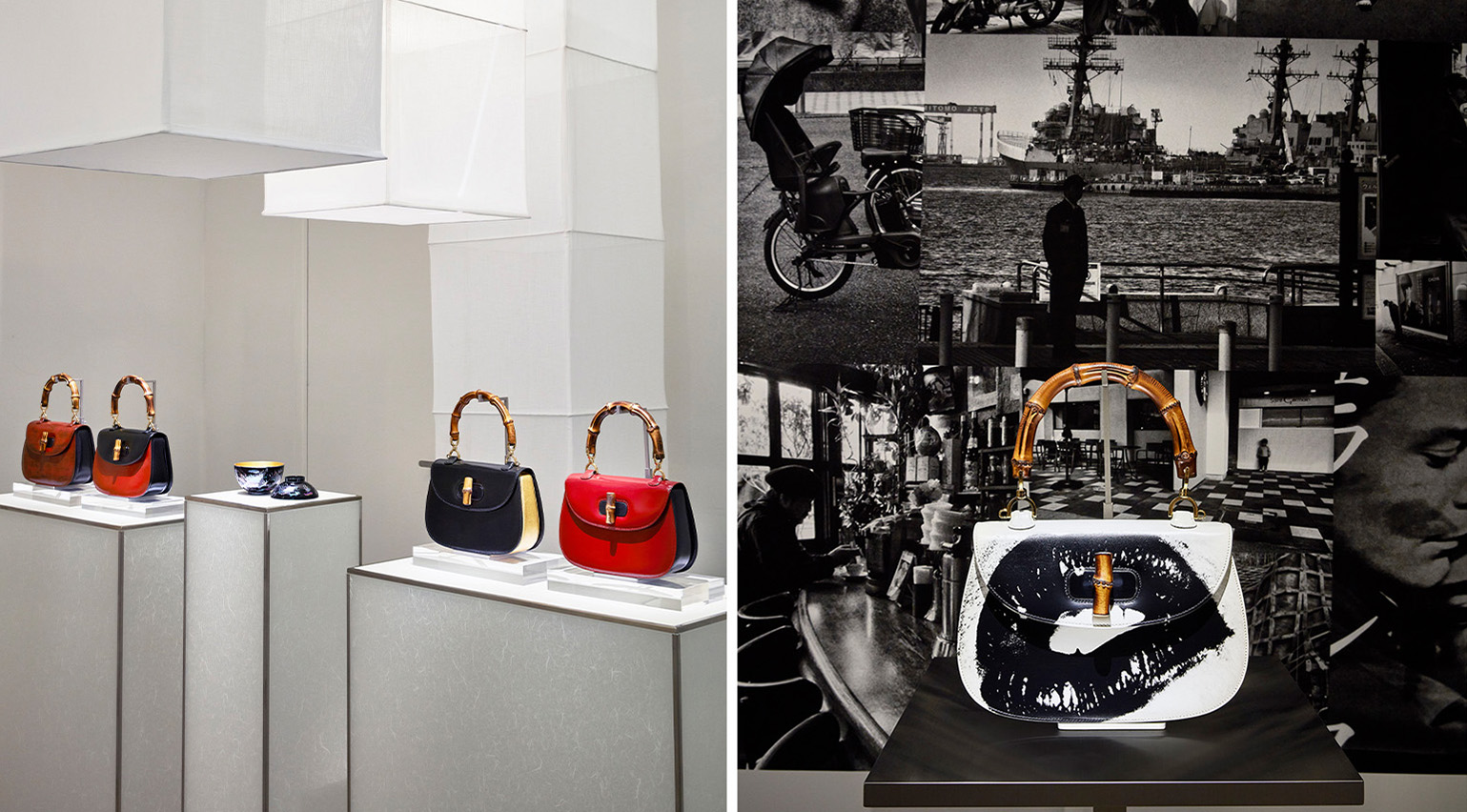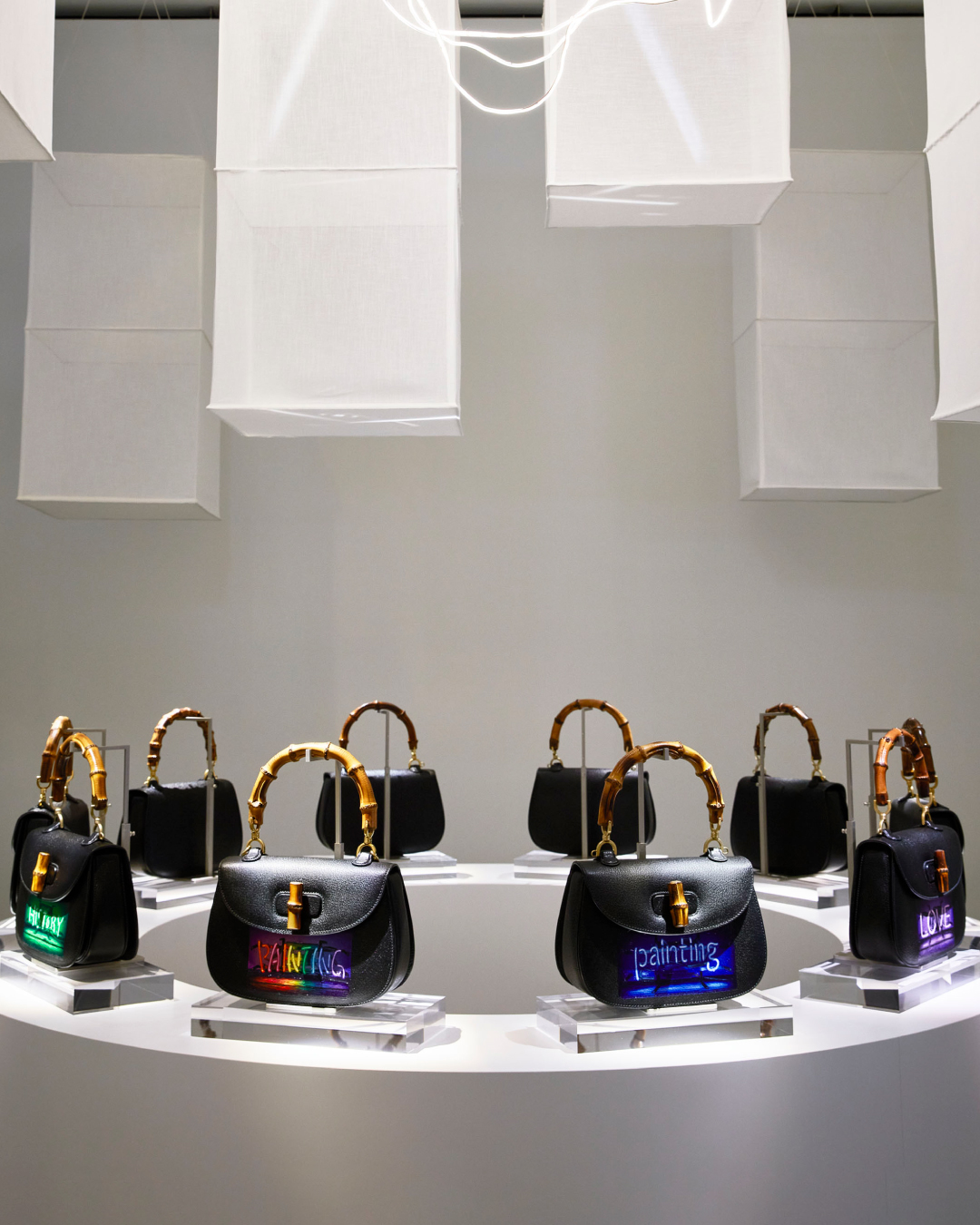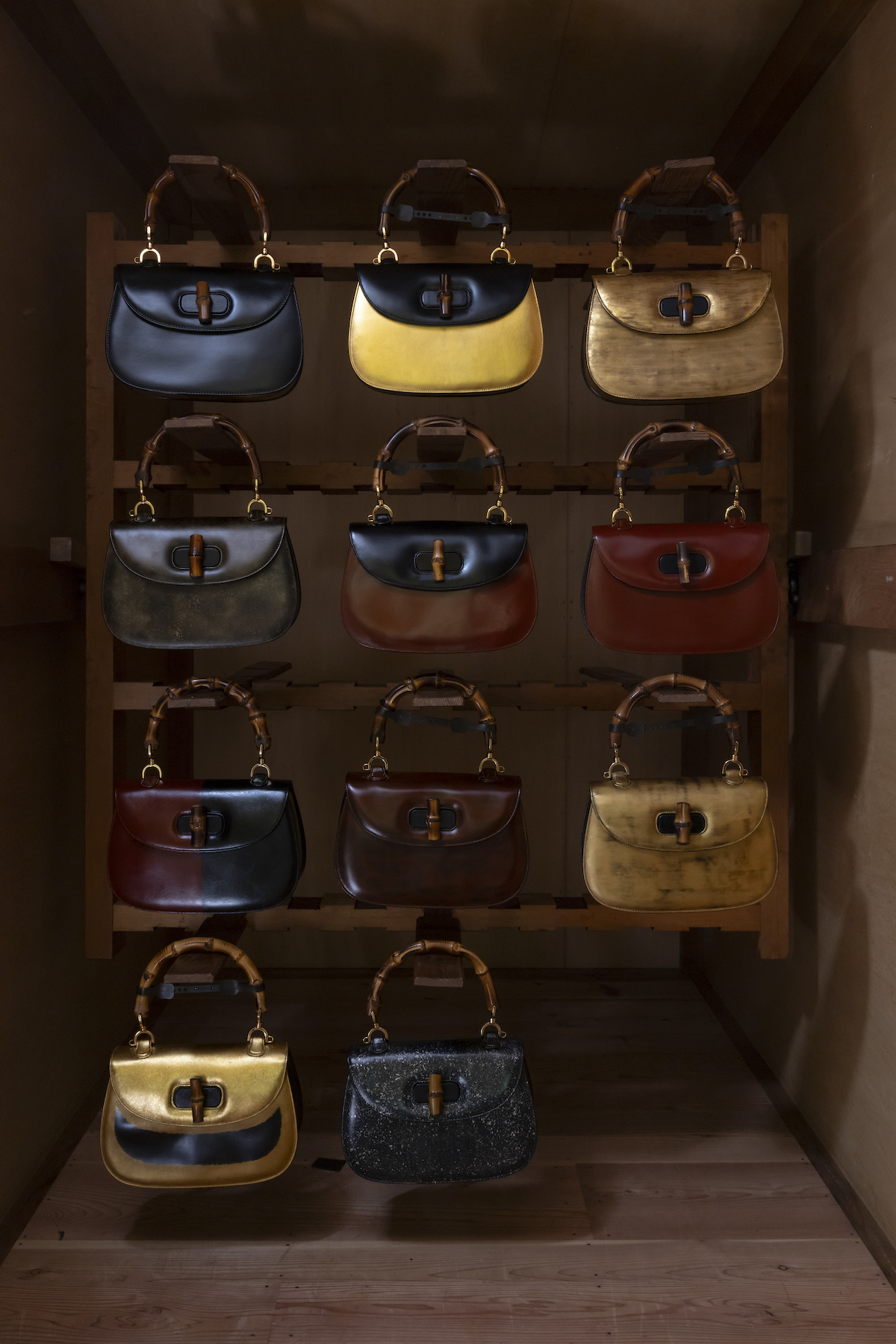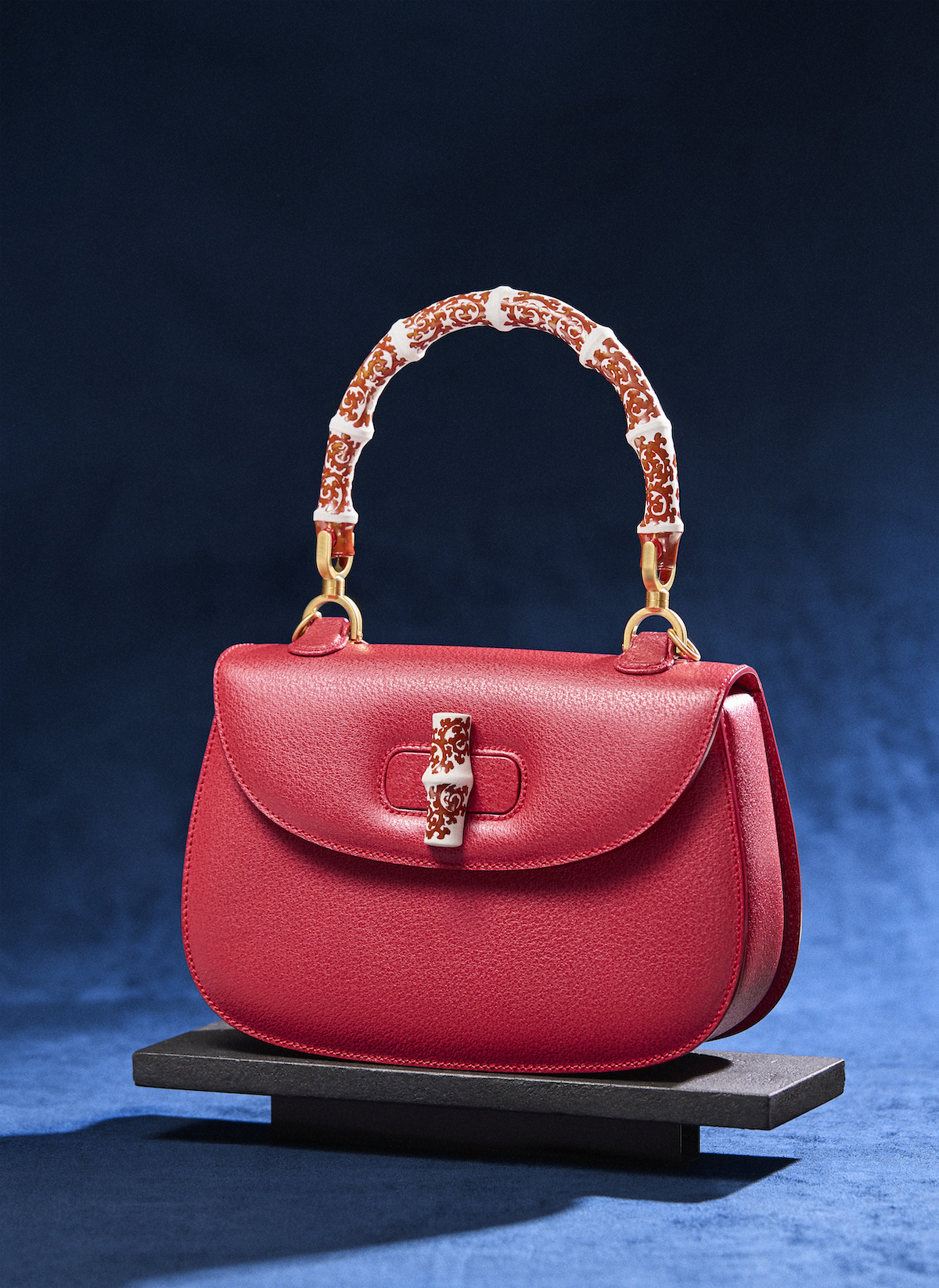
In 1964, Tokyo would host the Olympics, heralding a new era for the country and a re-introduction to the world stage. As the Bullet Train was completed and the sweeping lines of the Kenzō Tange-designed Yoyogi Stadium rose across the Tokyo skyline, Japan was cast as a country of peace and prosperity; a technologically-savvy nation recovered from the ravages of World War II. This optimistic mood would permeate the nation, luring an influx of international brands, as the games were beamed across the world via the first-ever use of satellite.
These included Gucci, the historic Italian luggage house which was seeing a renaissance of its own. Adopted by the burgeoning jet-set classes of the 1960s, its newly introduced double-G logo, Horsebit loafers and top-handle handbags became internationally recognised symbols of status and style. This was cemented in 1961 when Jacqueline Kennedy first carried what would be later renamed the ‘Jackie’ bag. Three years later, Gucci would arrive in Japan, a 60-year landmark the house celebrates this month with ‘Then and Now', an exhibition at the Gucci Ginza Gallery in Tokyo.
‘Then and Now’: Gucci celebrates 60 years in Japan

The focus here is on the house’s Bamboo 1947 handbag, recognisable for its curved bamboo handle, crafted in a meticulous process which sees the material – long synonymous with Japan – softened, manipulated and then lacquered into its unique curved shape. Launched in 1947 by house founder Guccio Gucci, the exhibition features 60 vintage Bamboo 1947 handbags from the house’s Florentine archive in a multitude of fabrics and finishes, primarily dating from the 1980s and 1990s.
In addition, a series of Japan-based artisans have reinterpreted the style using a range of craft techniques rooted in the country’s history. These include goldsmith Morihito Katsura (who has been awarded the status of ’Living National Treasure’ for his role in preserving Japanese ‘cultural artefacts’), his pupil Naoko Ai, lacquerer Ai Tokeshi, ceramist Nakazato Hirotsune, photographer Daido Moriyama and painters Yui Yaegashi and Nami Yokoyama.

‘Craftsmanship reflects the climate, history, and culture of each province,’ Tokeshi tells Wallpaper*, speaking of the historical importance of craft in Japanese culture. The Okinawa-born artisan adds layers of lacquer – some with gold foiled finishes – to the body of the bag, which she calls ‘harmonious’. ‘By experiencing inherited techniques, we can feel the lives and spirituality of our predecessors and how they interacted with natural materials,’ she continues. ‘This leads to a renewed appreciation of the uniqueness, charm, and richness of the land.’
Elsewhere, Hirotsune, who is known for his Aritayaki porcelain (a style from the Koyorian in Arita, Saga Prefecture which dates back 400 years) recreates the bamboo handle in porcelain. ‘[I wanted to] express the flexibility and elasticity characteristic of bamboo in the Bamboo Bag using porcelain, [so] I shaped each piece by hand, ensuring a form with individuality,’ he says. ‘The aim was to express the hardness and sharpness unique to porcelain, and the translucent whiteness that can only be achieved with the Amakusa pottery stone.’

‘Japanese crafts have value not only as tools for daily life, embodying “the beauty of utility”, but also as artistic crafts characterised by the delicate handwork unique to Japanese artisans,’ he says. ‘Although the standard of beauty and necessity changes over time, I believe it is important to create for both a new era, while also preserving traditional values and techniques. Crafts convey and perpetuate the climate of Japan.’
‘Bamboo 1947: Then and Now Celebrating 60 years of Gucci in Japan’ runs at Gucci Ginza Gallery, Tokyo until September 23, 2024.







